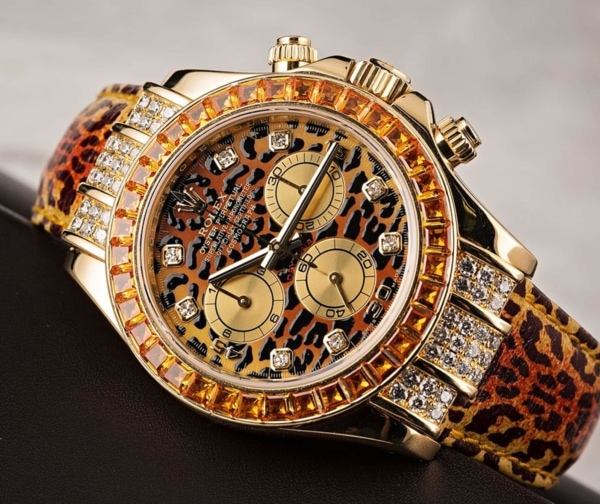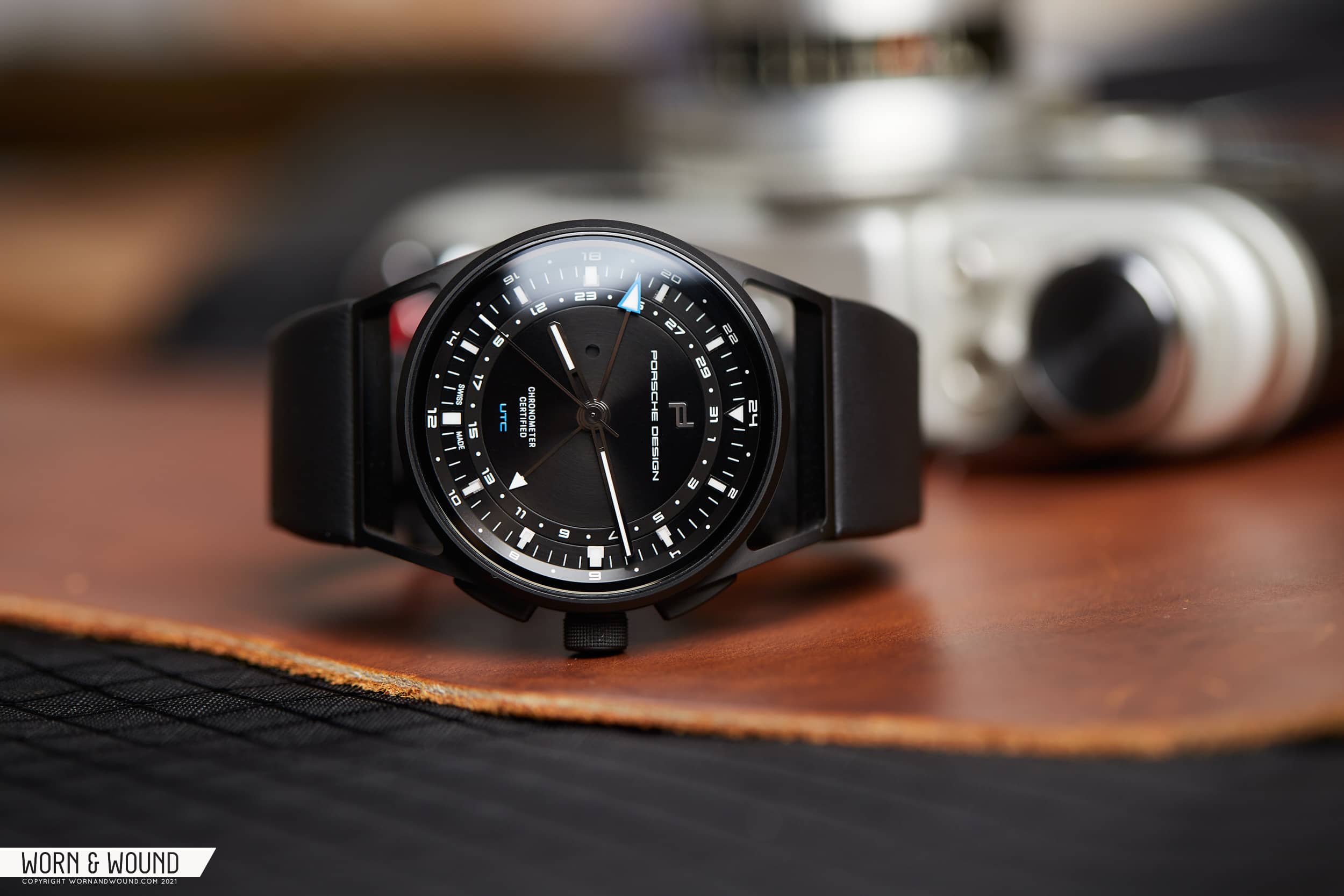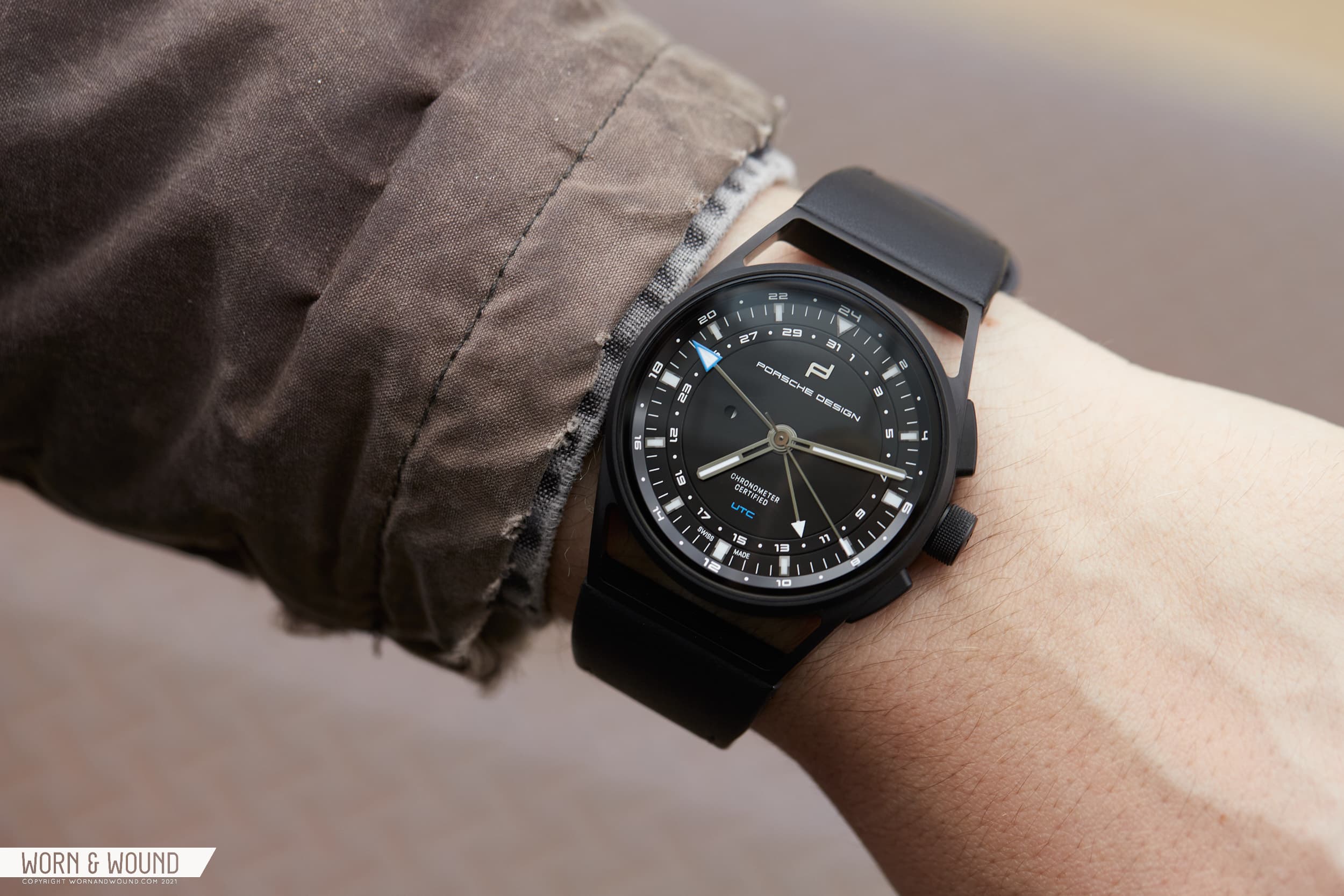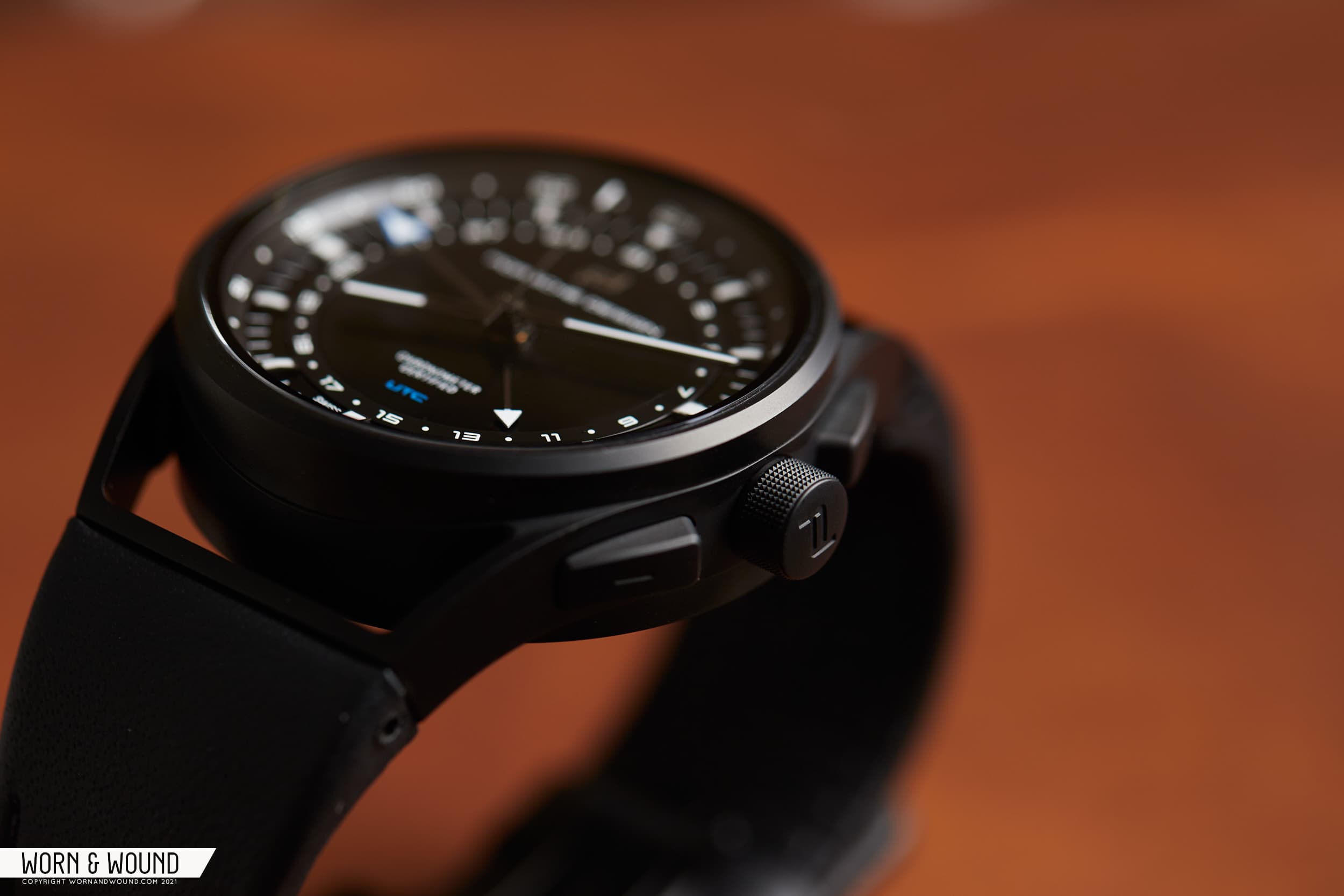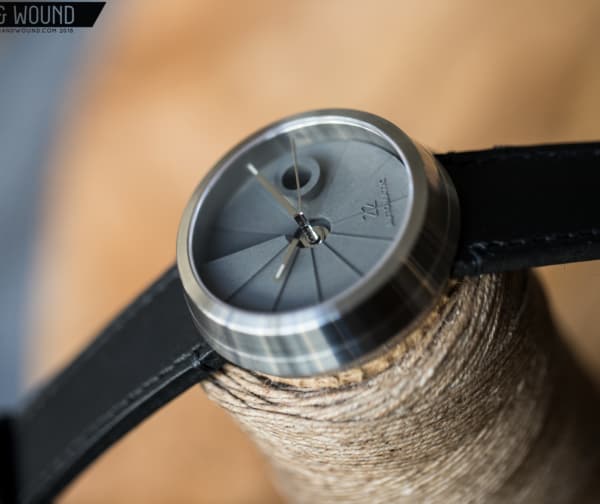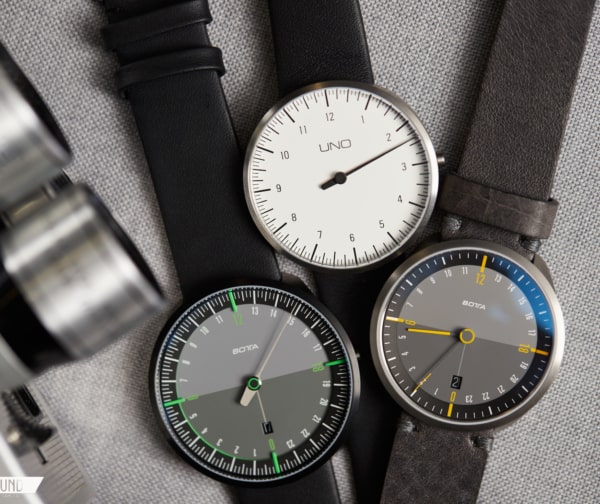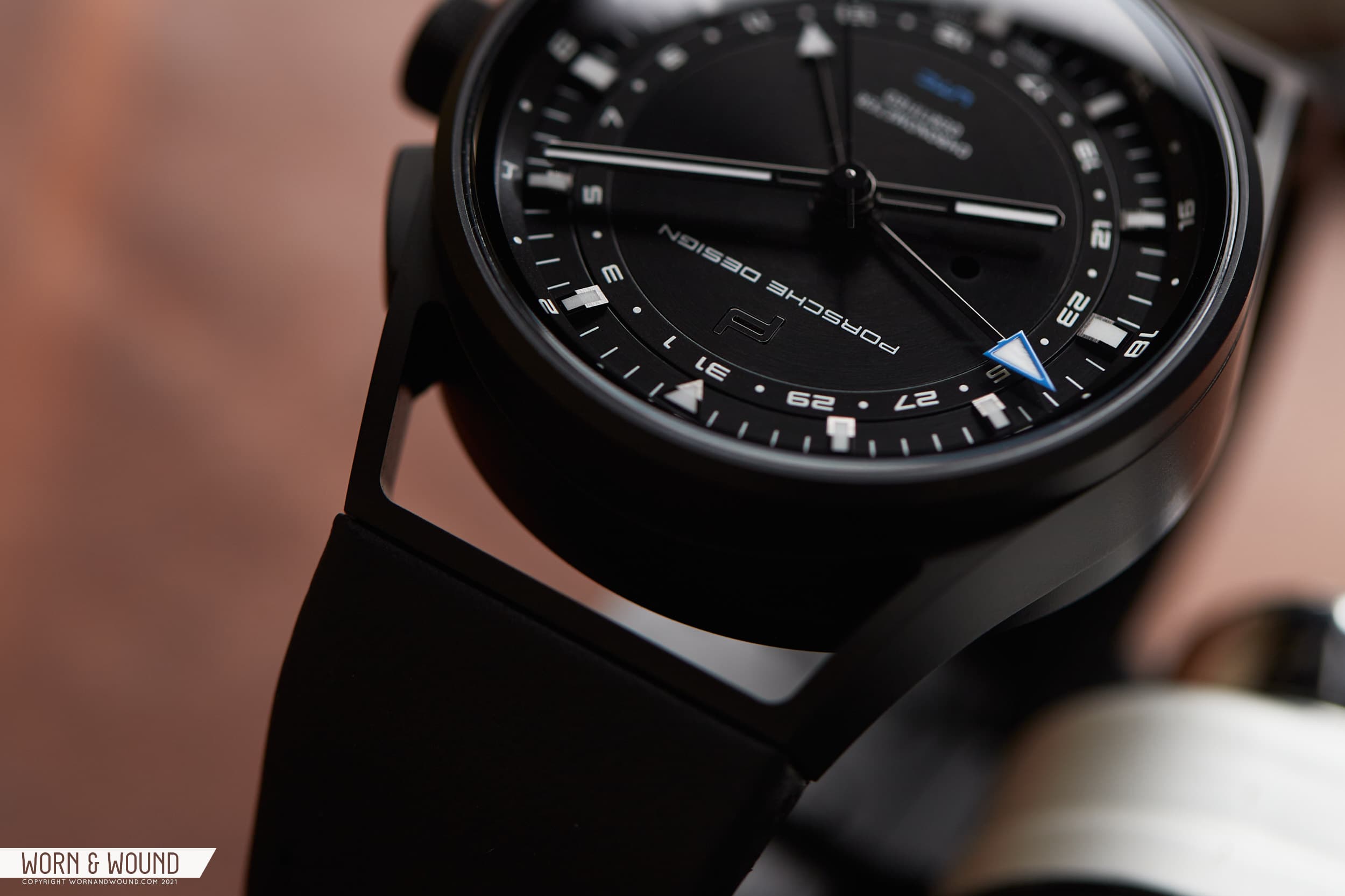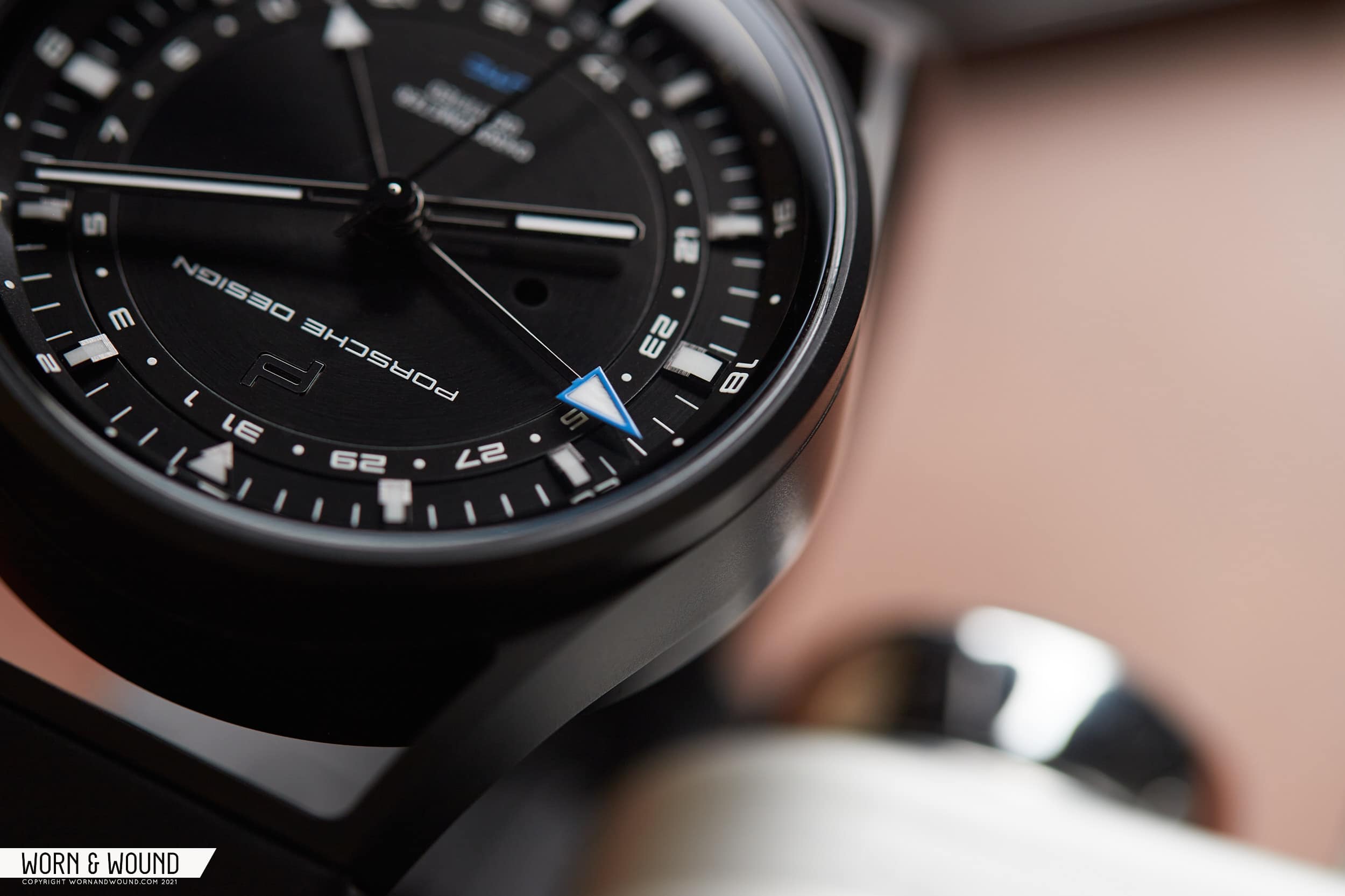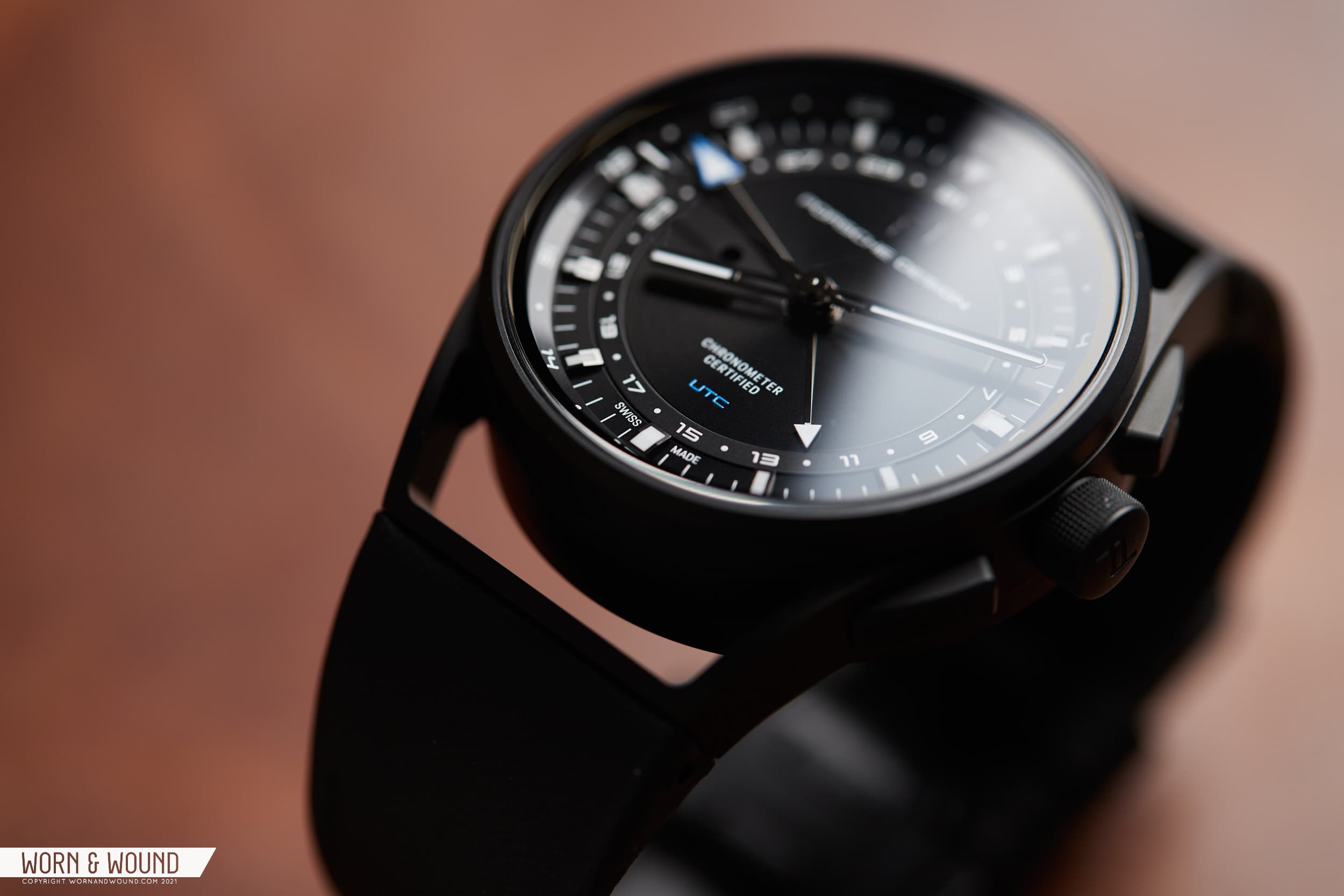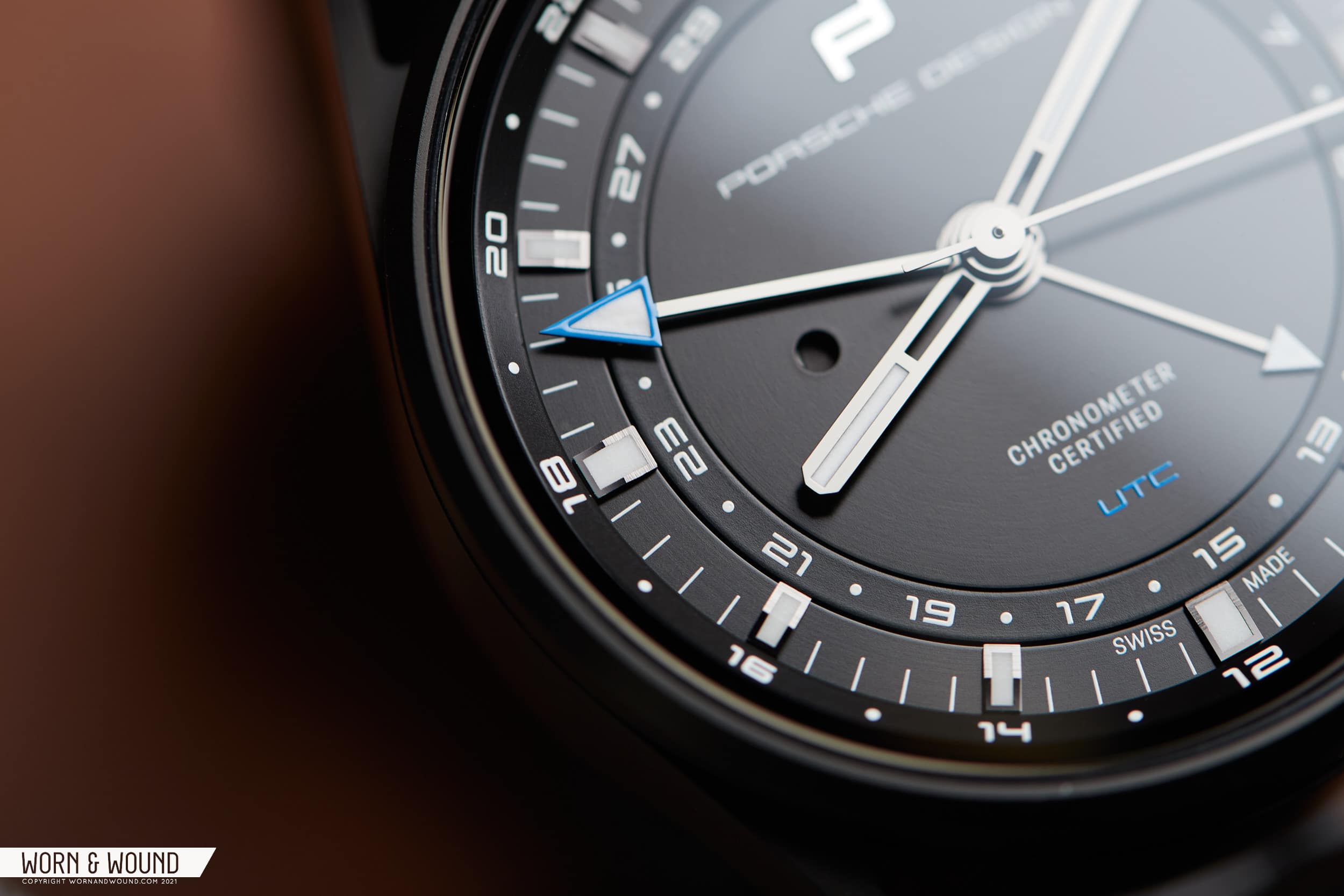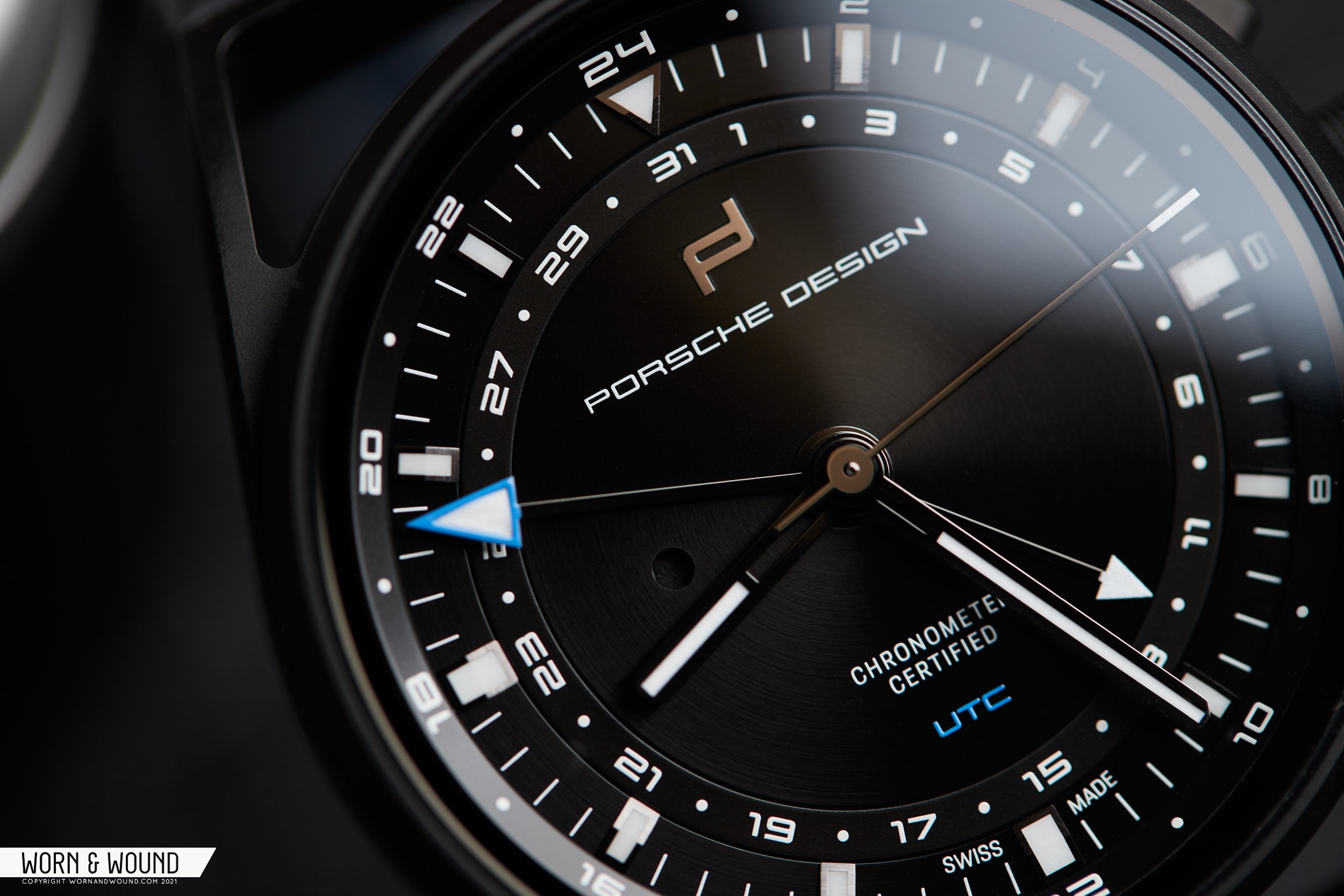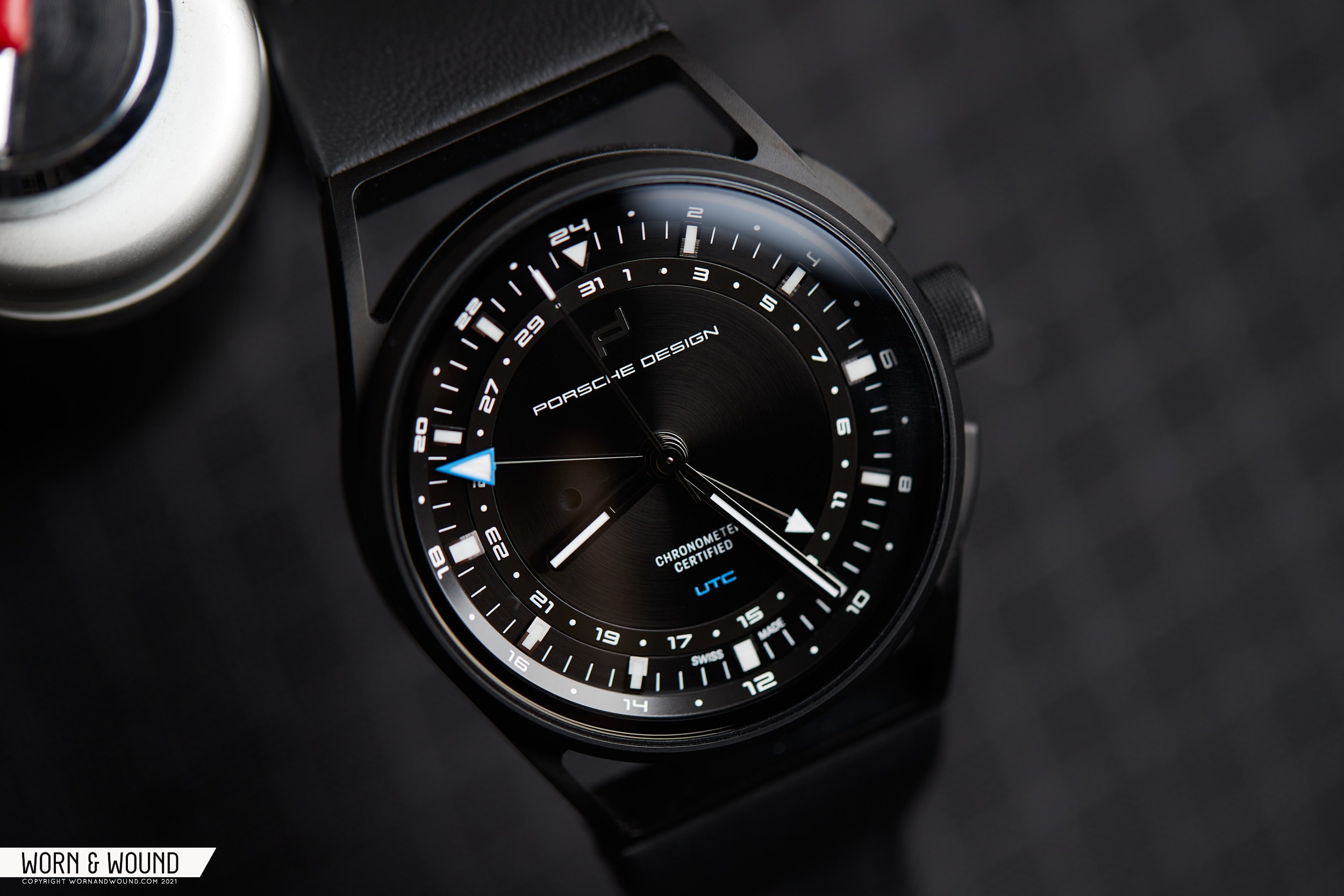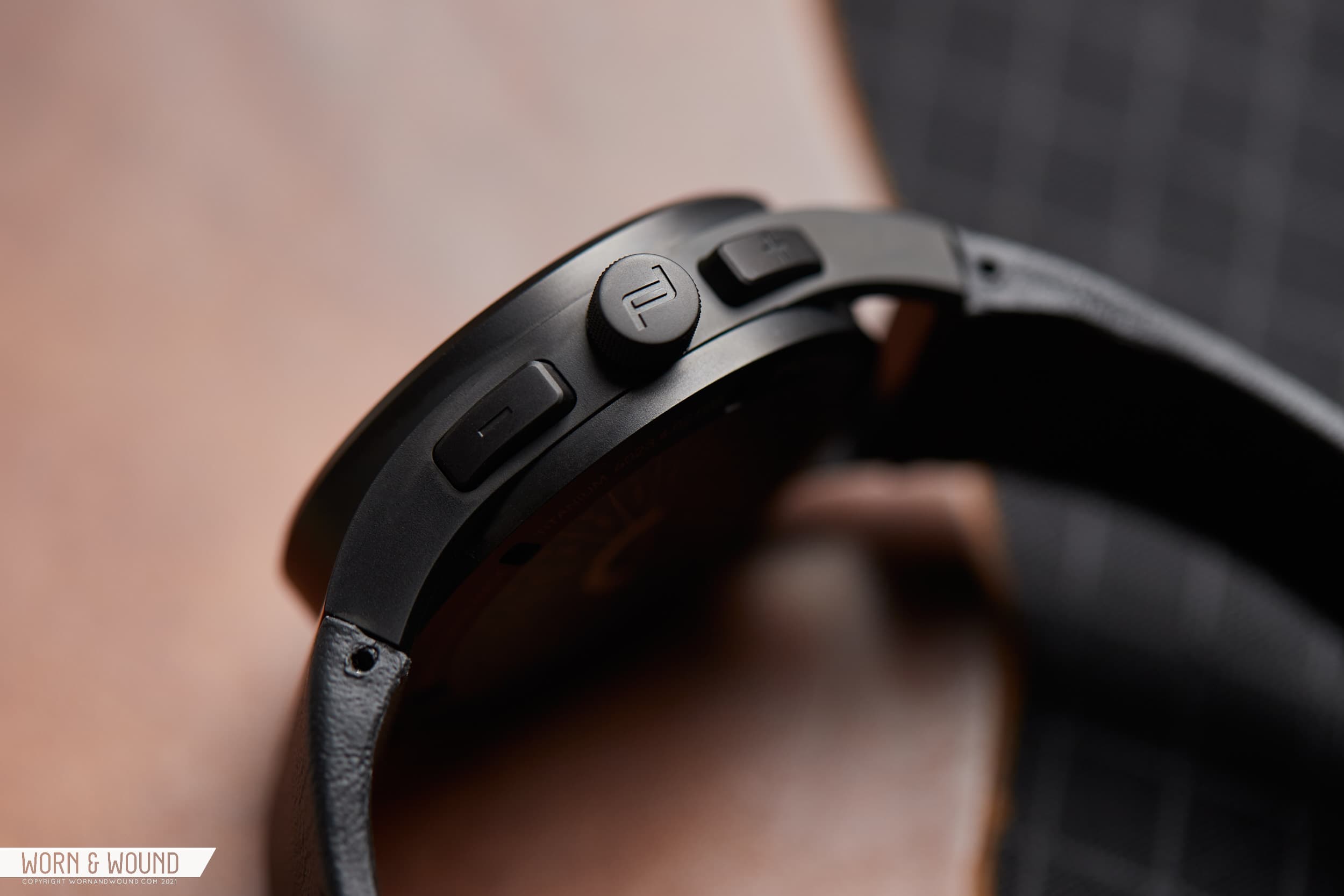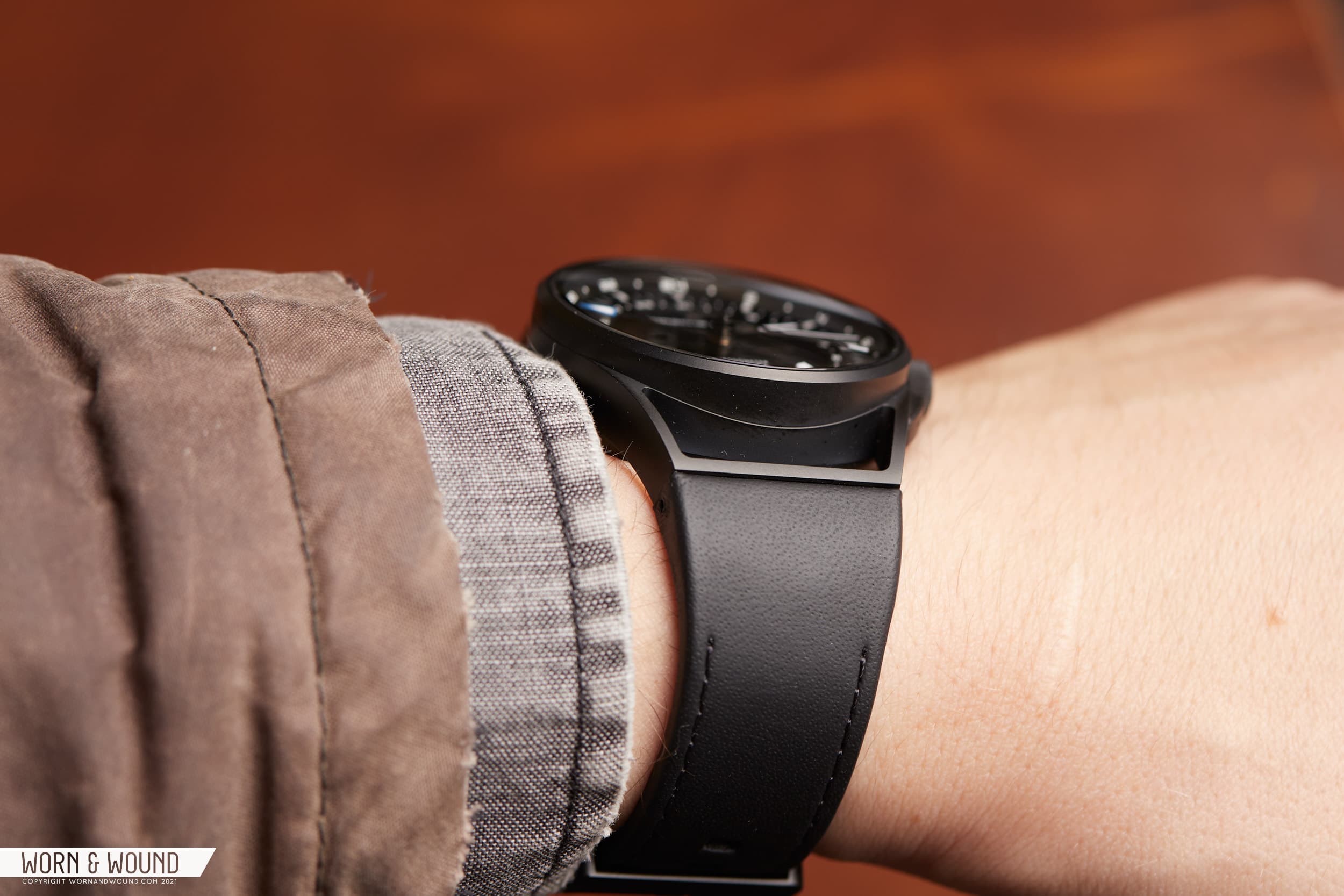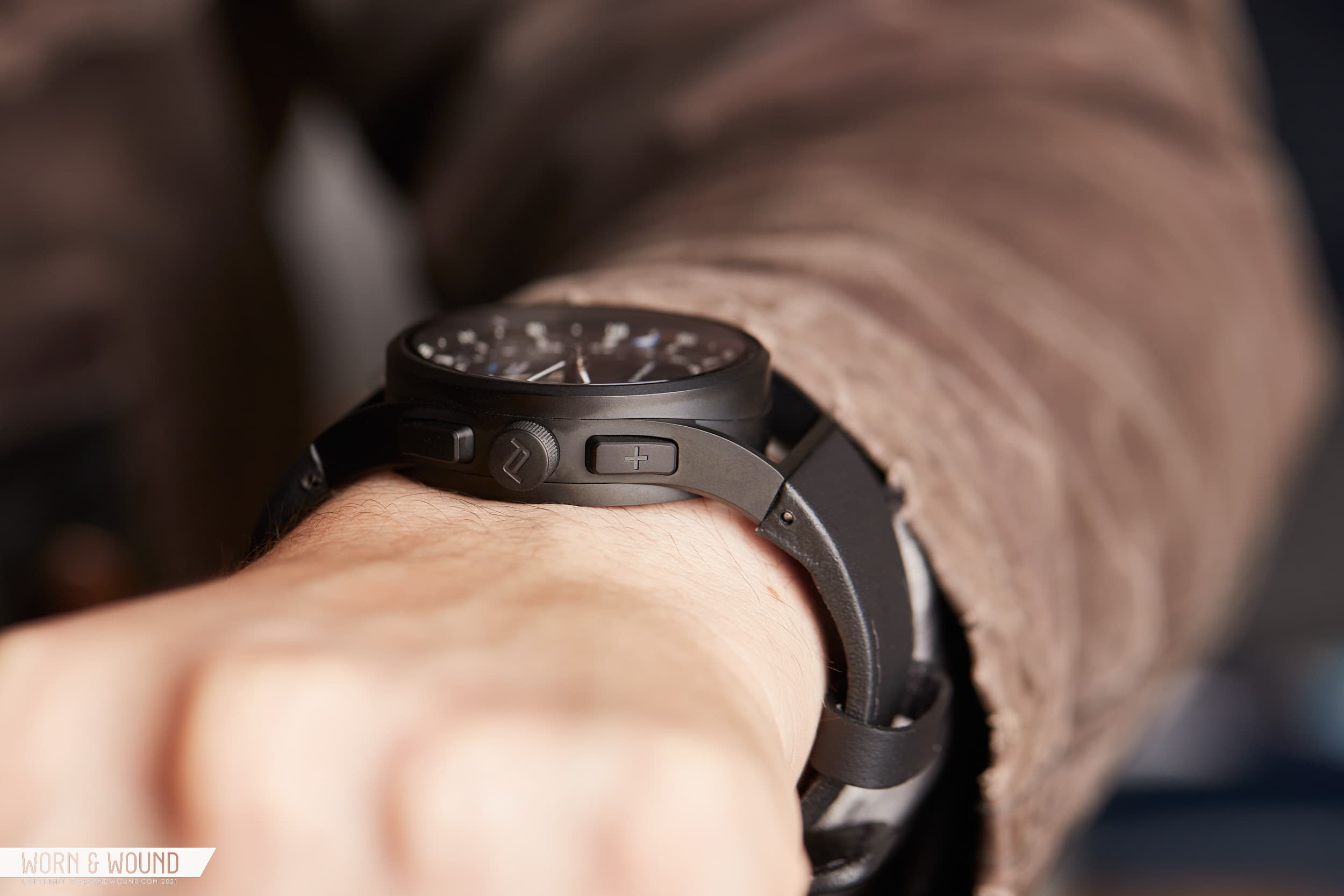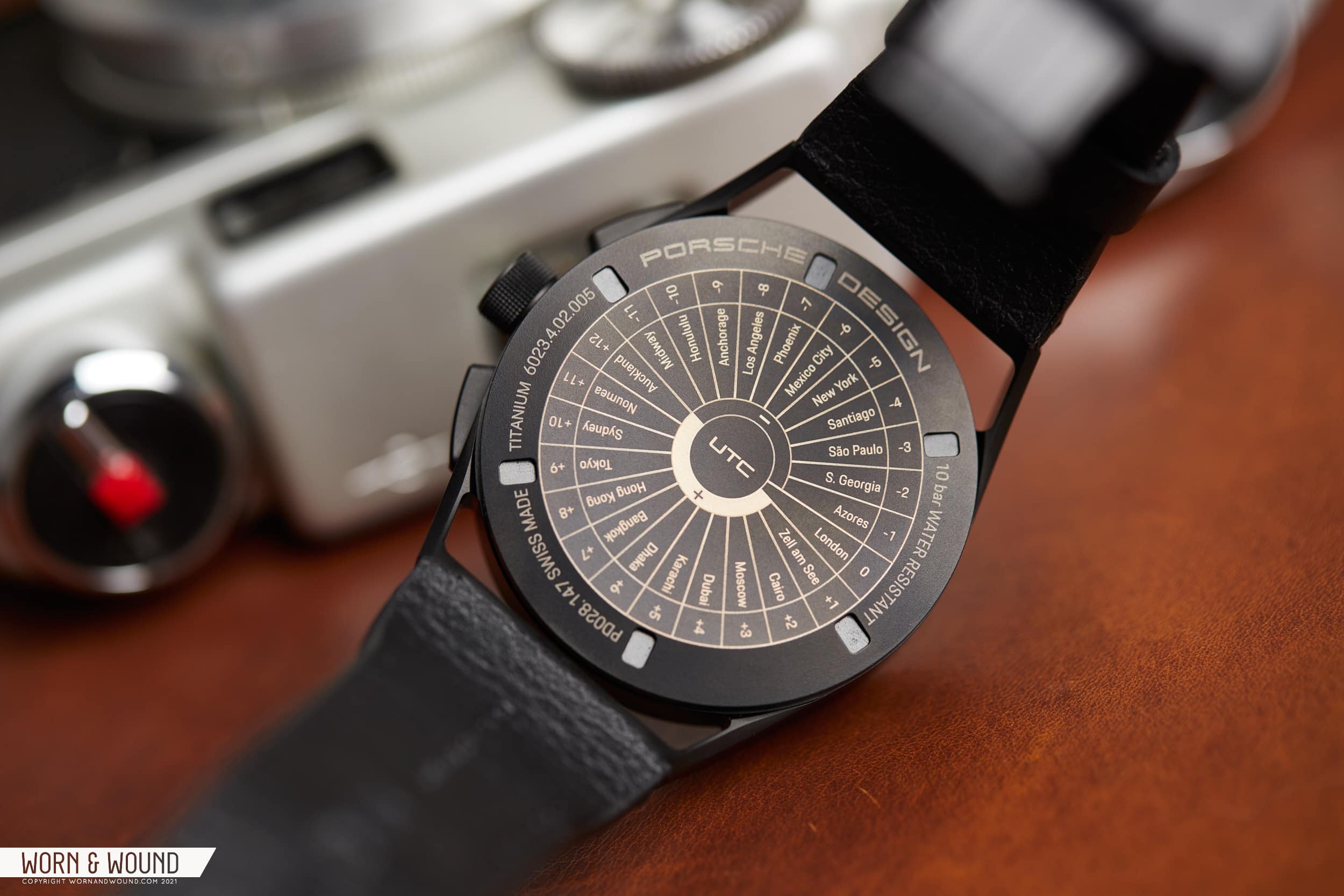I am a big fan of challenging my own preconceived notions about what I like in watches. This, I think, is the only way to really grow in this hobby, and to keep it from getting stale. Because I’m open to almost anything, I’ve had watches of all kinds in my collection at any given time. Dress watches, tool watches, big watches, small watches, and watches made in Switzerland, Japan, Germany, and the good ol’ USA have come in and out of my personal collection at various times, and at various times I thought each of these little subcategories would be the thing that guides my “collecting journey” to the end, not that it ever really ends, of course. And, just as you’d expect, every single time, I was flat out wrong.
There was a time when a watch like the Porsche Design 1919 Globetimer UTC All Black would have been at the top of my “To Buy” list. This is a watch from an interesting brand with a fascinating history and ties to a carmaker that I have a lot of personal fondness for, with a funky and ultra modern appearance that I happen to dig quite a bit. It’s also a wholly unique spin on the GMT complication, with deceptive pushers on the caseband that don’t operate a chronograph at all, but jump an hour hand forward and back in time, enabling weary travelers to switch time zones with a click rather than a slower unscrewing, turning, and additional screwing. I went through a hardcore tool and sports watch phase that I’m only now putting in the rearview, and at the height of it, a watch like this would have checked a lot of boxes.









 Featured Videos
Featured Videos


